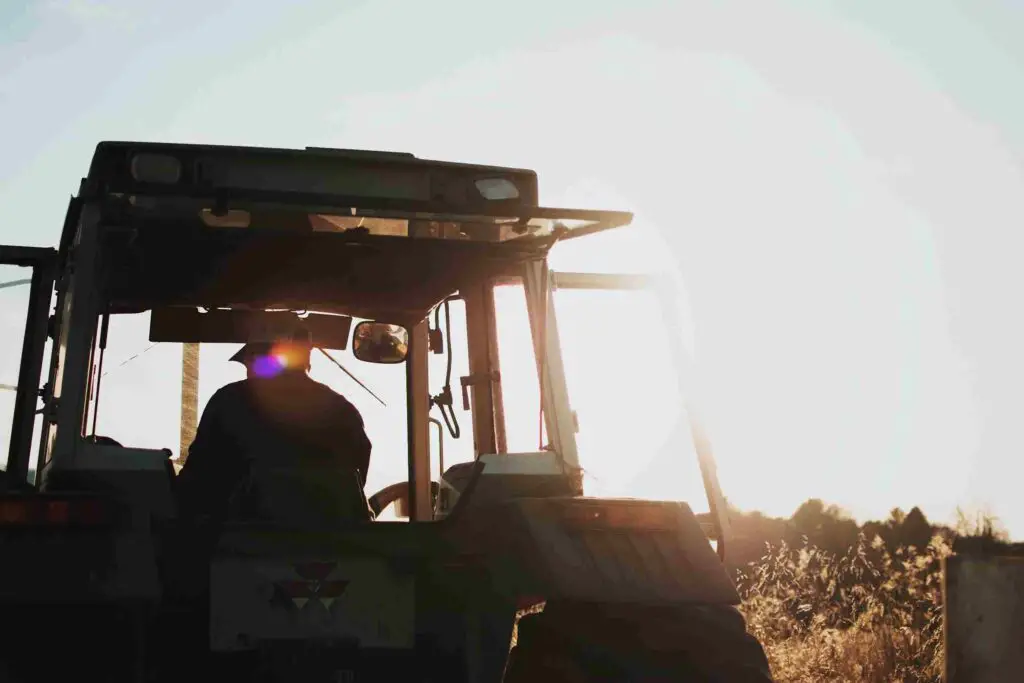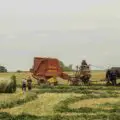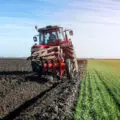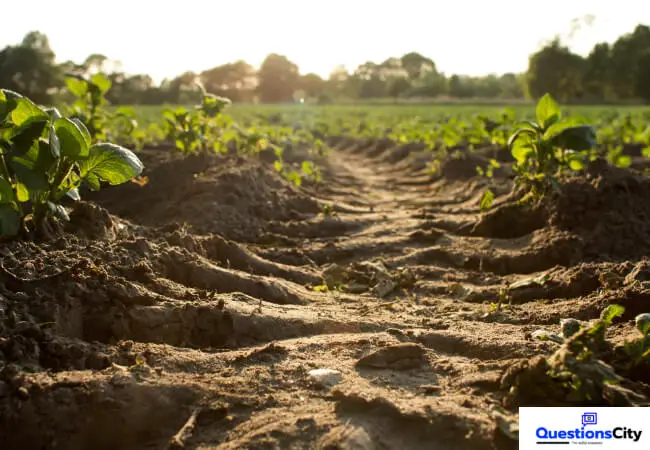Last Updated on March 19, 2022 by QCity Editorial Stuff
There are many different ways to raise crops and livestock. Traditional farming is done in a very hands-on way, while modern methods tend to use more technology and machines. Both traditional and modern farming have their advantages and disadvantages that contribute to the end product of what we eat. Read on for further information about each type of farming.
Many people think that organic food tastes better than regular food; however, this isn’t always true. The taste difference may be small because it depends on how you prepare the foods as well as your personal preference. But if you compare organic fruits with non-organic ones, there will be noticeable differences such as color or shape. While some prefer to buy organic due to health concerns, others prefer to choose organic because they want to cut down on pesticide use while growing food, and reduce the amount of non-renewable resources such as oil and natural gas used to produce food.
Modern farming methods are different than traditional ones because they use chemicals and pesticides to protect the crops. Traditional farmers, however, used different techniques such as crop rotation or cover crops to maintain their yields. These types of practices were more sustainable for the soil but required extra work from the farmer. While modern farming is less labor-intensive, it also has its drawbacks because it does not allow for biodiversity like traditional farming can when using these other practices.
Comparison between Traditional and Modern Farming Methods
| Parameters of Comparison | Traditional Farming Methods | Modern Farming Methods |
| Scale | Large scale | Small scale |
| Land | Need more land | Need less land |
| Production | Less production | More production |
| Pesticide | Do not use pesticide | Use pesticide |
| Costly | Less costly | More costly |
What are Traditional farming methods?
Traditional farming methods are a way of doing things that have been used for centuries. It includes the use of natural resources and sustainable practices to grow crops, livestock, and produce food. Traditional farming methods help to protect the environment by relying on renewable resources like sunlight, water, wind, and earthworms. These methods also limit pollution such as air or soil contamination from chemical fertilizers or pesticides which can cause serious harm to humans and animals alike. The use of traditional farming helps reduce our carbon footprint by keeping it at a manageable level while providing us with nutritious foods that we need to survive.
Farming has always been a key part of the development of human civilization. Over the years, farming practices have changed drastically to meet our ever-growing need for food. This is due to population growth and climate change factors that are making it difficult to grow crops in some areas. With traditional farming methods, farmers focus on keeping their soil healthy by rotating crops and using natural fertilizers like manure or compost instead of commercial ones like chemical fertilizers which can harm both humans and animals alike. Traditional Farming Methods focus on preserving the environment while producing quality food products with minimal processing needed before consumption.

What are Modern Farming Methods?
Modern farming methods are used to produce food for the world. Farming has evolved. New technologies have allowed farmers to develop more efficient ways of producing food. At the same time, these modern farming methods are also good for the environment because they use less water and energy than traditional farming practices. Farmers can reduce their carbon footprint while still providing enough food for everyone on earth. We must continue using modern techniques so that there will be no famine or shortage of nutrients in our society today or tomorrow. We must take care of our planet if we plan to keep living on it! This blog post discusses how modern farming methods work and why they are beneficial, both environmentally and economically speaking.
Modern farming methods are a way of improving the yield and quality of agricultural products such as grains, fruits, vegetables, cotton, and sugarcane. Advances in technology have allowed for more efficient production of these materials while still being sustainable. For example, greenhouses allow crops to be grown year-round without having to rely on climate conditions or seasons which can affect the availability of some types of produce. The use of machinery has also been successfully implemented to reduce the costs required for labor at harvest time. In addition, these new technologies have enabled farmers to grow more crops on less land with fewer water resources applied leading to increased profits from farms that may not have been able to sustain themselves before due to limited space or resources available.

10 Differences Between Traditional and Modern Farming Methods
1. Traditional farming methods are typically done on a large scale with machinery, whereas modern farming is more often done on a small scale.
2. Modern farming requires less land to produce the same amount of food as traditional farming does.
3. The yield of crops from traditional farms has been declining over time, but yields have remained stable for modern farms.
4. Crops grown in traditional farms use more water and pesticide than those grown in modern farms.
5. Traditional farmers don’t always know what they’re growing until after it’s harvested, while modern farmers can plan out their crops much earlier using technology like satellite imaging and computer modeling.
6. Modern farm techniques require less manual labor than those used by traditional farmers because machines do most of the work now instead of people (e.g., tractors).
7. Traditional farming methods rely on natural resources such as animals, manure, and crop rotation to fertilize the soil.
8. Modern farming methods use artificial fertilizers and pesticides that can harm the environment.
9. The modern method of farming is more expensive because it requires a lot of human labor and machinery.
10. The traditional method of farming is less expensive because it relies on natural resources instead of expensive machinery.
Interesting Statistics or Facts of Traditional Farming Methods
1. The oldest known farming methods are at least 12,000 years old.
2. The earliest farmers were hunter-gatherers who settled down to grow crops and raise animals.
3. Farming is the world’s most important industry because it provides food for billions of people.
4. Traditional farming methods include planting, harvesting, plowing fields with oxen or horses, raising livestock like cows and pigs for dairy products and meat.
5. Crop rotation is a traditional method that involves alternating between growing different types of plants to keep the soil fertile over time.
6. Planting wheat after corn helps keep the ground fertile by replenishing nitrogen in the soil.
Interesting Statistics or Facts of Modern Farming Methods
1. There are more than 9 million farms in the United States.
2. The average age of a farmer is 58 years old.
3. Farming has been around for 12,000 years.
4. One acre can provide enough food to feed one person for up to four months.
5. Farmers use less than 1% of all fresh water in the world each year.
6. About 50% of farms are family-owned and operated by someone who lives on or near the farm.
Conclusion
Modern farming has been a blessing for many reasons, but it also poses some risks. Traditional methods of farming may be more sustainable and allow farmers to work with nature instead of against it. It’s important not only to consider how modern farming is affecting the environment but also what alternatives exist that could be better suited for this new era in food production. If you are interested in learning about these other options, let us know! We would love to help you out by developing an organic SEO or marketing plan tailored specifically to your needs.
References:
Resource 01: https://www.resilience.org/stories/2017-08-14/five-indigenous-farming-practices-enhancing-food-security/
Resource 02: https://www.plugandplaytechcenter.com/resources/new-agriculture-technology-modern-farming/#:~:text





